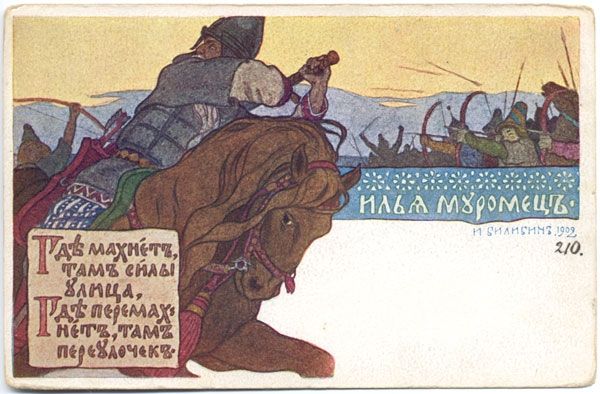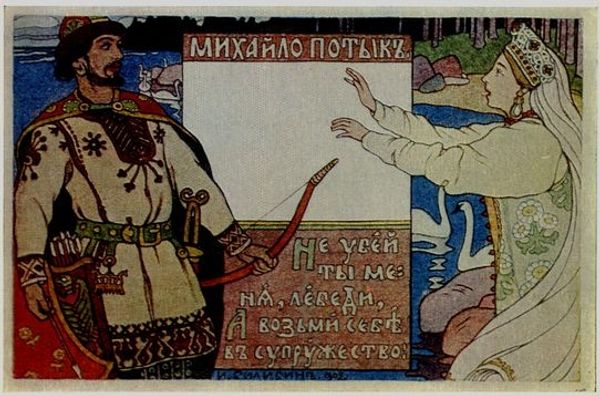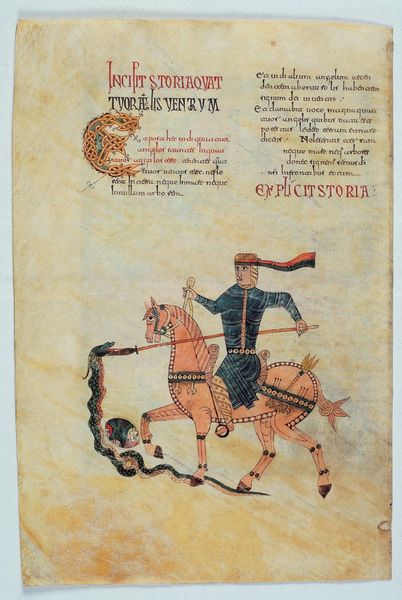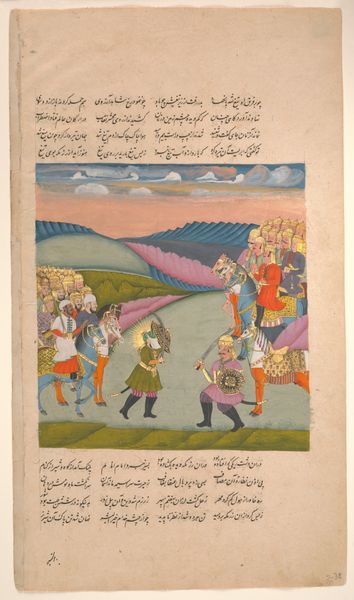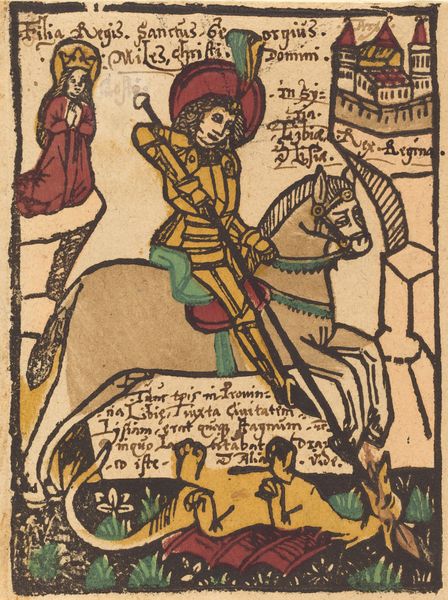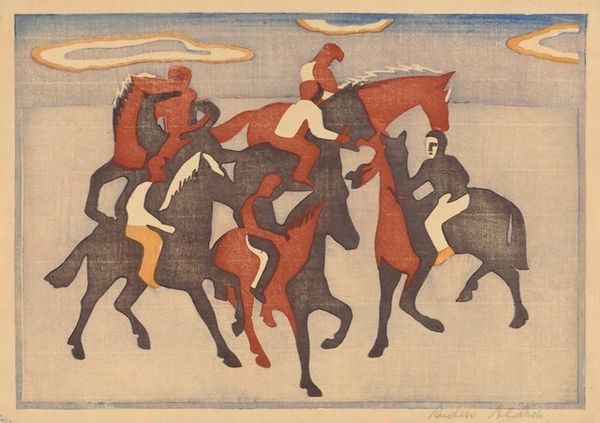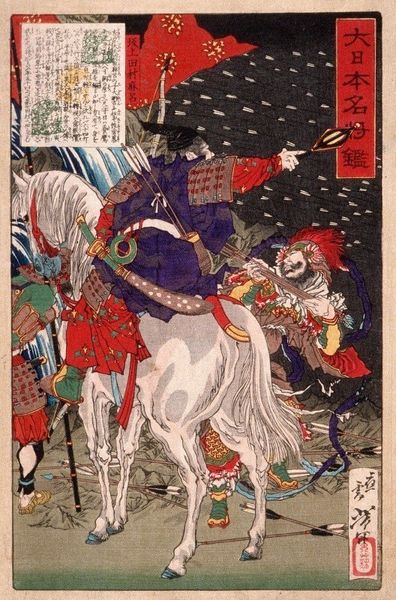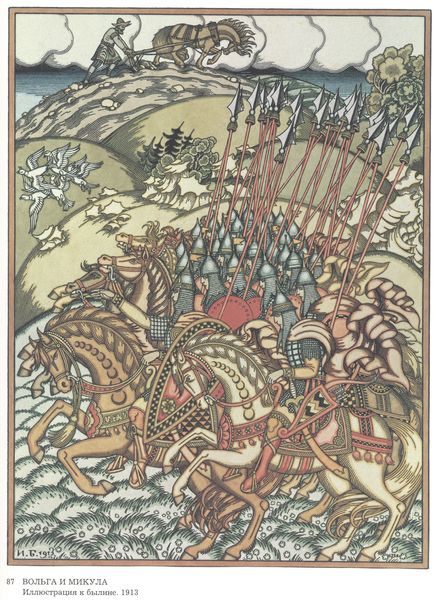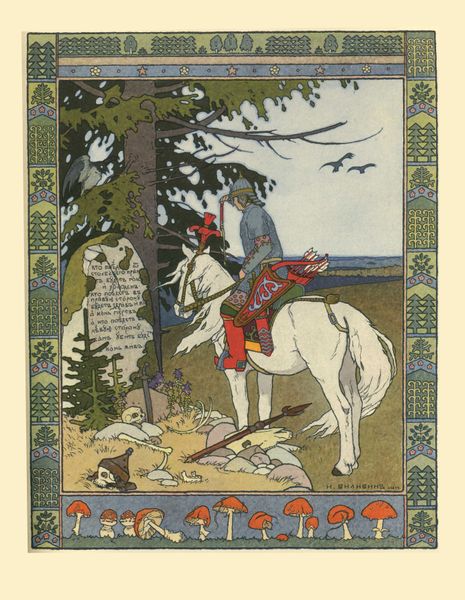
painting, watercolor
#
narrative-art
#
ink painting
#
painting
#
war
#
landscape
#
figuration
#
text
#
watercolor
#
linocut print
#
mythology
#
symbolism
#
russian-avant-garde
#
watercolour illustration
Copyright: Public domain
Curator: Ivan Bilibin created this illustration in 1903, titled "Bogatyr Volga," intended for the epic poem "Volga." It incorporates ink and watercolor, showcasing Bilibin's signature style rooted in Russian folklore and symbolism. Editor: My initial thought? I'm getting strong fairytale vibes. It feels…almost stagey? Like a scene from a beautifully illustrated book. And that golden hour light on the river! Really inviting, though I suspect there is conflict coming. Curator: Absolutely, Bilibin was instrumental in shaping the visual identity of Russian folklore. He drew heavily from traditional ornamentation and design, mirroring the 'style russe' aesthetic. Examining it through a postcolonial lens, one might explore how it constructs and reinforces a romanticized vision of Russian national identity. Editor: Right. I can see that—it’s potent imagery for sure, looking both back and perhaps forward. Though, even without that layer, the stylization, the patterned armor…it’s just really compelling visually. The horses even seem woven with the landscape. Curator: The meticulous detail reflects the Symbolist movement, emphasizing the artwork’s evocative power. Also, observe the deliberate use of text, integrated as a compositional element alongside the figurative and landscape elements. It's as if the written word becomes another layer of the visual narrative itself. Editor: That's it! The way he weaves the lettering—the *font* itself—into the image is key. It doesn't feel separate, more like it sings out in some long-forgotten meter, like an old Slavic hip hop track...ha! But this emphasis makes you feel a little like a participant, you're drawn right in. Curator: His use of the Russian landscape as a symbolic space, filled with potential for both danger and heroism, reinforces Russia's sense of historical destiny—very crucial to its construction. He also challenges dominant academic conventions, thus validating folk culture within art discourse. Editor: Mmm, I’m left with a weird sense of longing... It almost feels like looking at an echo of some potent ancestral memory. As if my own story may have unfolded, once upon a time, beneath that brooding sky. Curator: Ultimately, this illustration transcends its function, serving as a complex cultural statement laden with nostalgia, ideology, and artistic innovation. Editor: True—it makes you feel connected to something ancient and, at the same time, strangely contemporary. That tension keeps it alive.
Comments
No comments
Be the first to comment and join the conversation on the ultimate creative platform.
